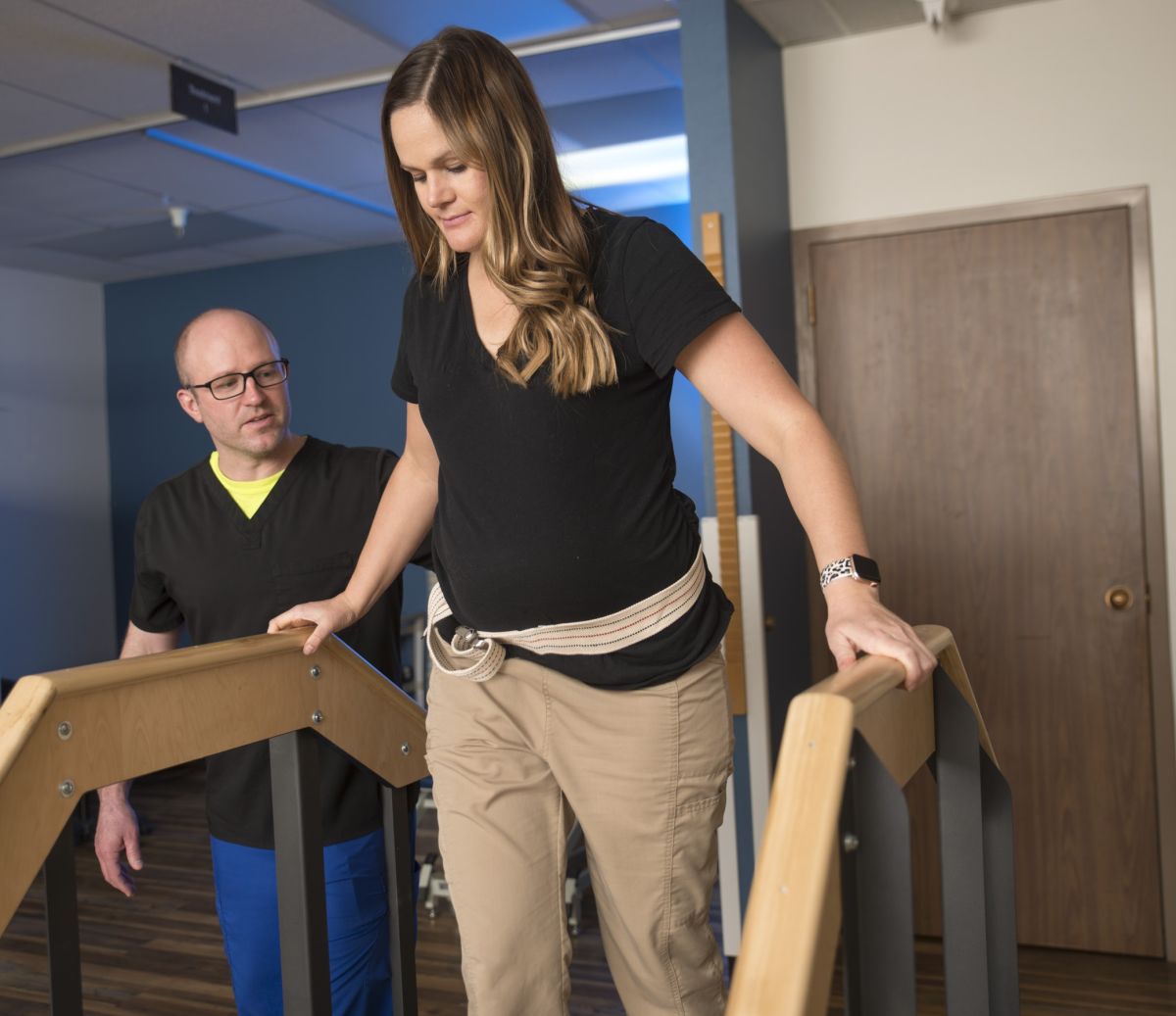Recovery’s Not-So-Secret Sauce: Physical Therapy
October 23, 2024
The best day in the hospital for everyone involved is your discharge day, the day we send you home mended from whatever brought you to us in the first place.
This is especially true in rehabilitation services, particularly for our physical therapists, who may initially greet a patient who is using a cane or walker to enter the hospital only to walk them out of the building two weeks later.

We call this out because October is National Physical Therapy Month, a time set aside to recognize and celebrate the physical therapists (PTs) and physical therapy assistants (PTAs) who help so many of our patients achieve a goal they often began to doubt – living independently and performing the routine, daily activities most of us take for granted.
Patients seek physical therapy to recover from any of a number of conditions, including:
- Brain injury
- Cardiovascular or pulmonary issues
- Hip or thigh fractures
- Leg amputation
- Major multiple trauma
- Neurological conditions such as motor neuron diseases, multiple sclerosis, muscular dystrophy, myopathy, Parkinson’s disease, or polyneuropathy
- Stroke
- Total hip replacement
- Total knee replacement
- Other medical and debilitating conditions
When a patient comes to SageWest Health Care for inpatient or outpatient rehabilitative services, our team will assess their condition and chart a plan for recovery that typically focuses on education and exercises that improve strength, mobility, range of motion, and stamina. The goal is to return the patient to work, play, or normal daily activities.
Our team typically works with each patient at least three hours a day for up to two weeks, depending upon the underlying condition. Their skilled care often helps patients get back on their feet and realize the healing and recovery they had only dreamt about.
This year's National Physical Therapy Month theme, per the American Physical Therapy Association, is Fall Prevention.
Each year more than one out of four older Americans, ages 65 and above, experience a fall, and three million older people are treated in emergency departments for fall injuries. Falls are also responsible for 95% of hip injuries. In addition to injury, a fall can result in unwanted outcomes, including loss of independence and decreased ability to do the things that are most important to you.
A physical therapist can help you reduce your risk of falling by:
- Assessing your risk of falling.
- Designing a personalized exercise and balance training program.
- Educating you about the medical risk factors linked to falls.
- Helping you make your home as safe as possible.
- Improving your ability to take part in physical activities to maintain your fitness and overall health.
- Working with other healthcare providers and community services to create programs to reduce the risk of falls.
If you might be at risk of falls ‒ or haven’t fully recovered from an injury, illness, or procedure ‒ perhaps physical therapy should be on your October to-do list. We know a therapist or two at SageWest Health Care looking forward to meeting you at the door and ultimately walking a new and improved you out of the building.
To learn more about physical therapy services at SageWest Health Care, visit sagewesthealthcare.com/therapy-services.
